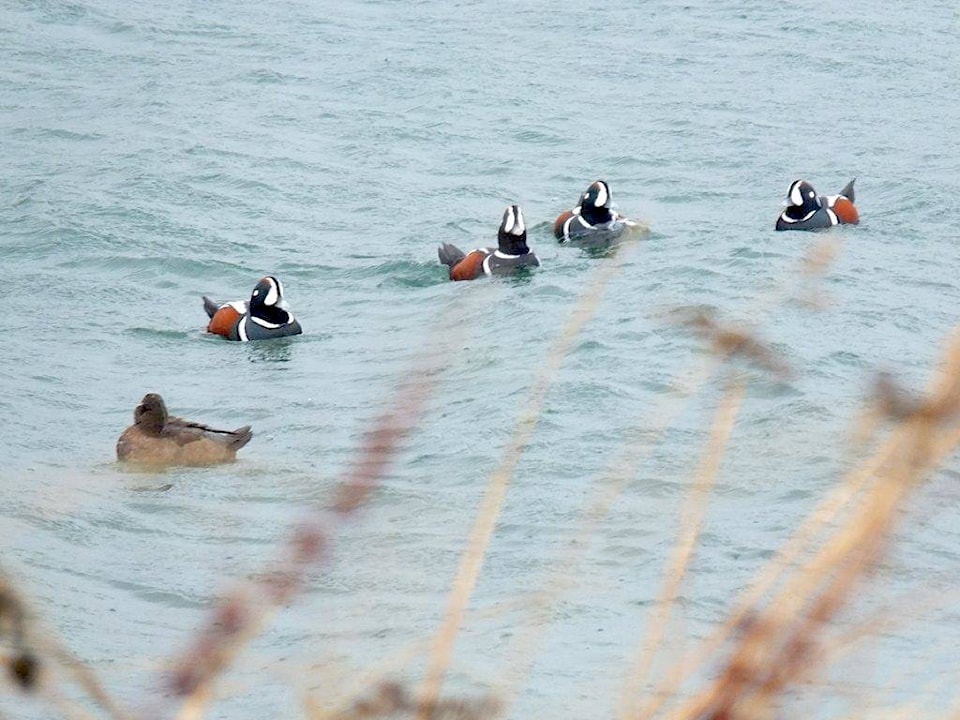By Margo Hearne
The winds of morning brought thousands of birds to Haida Gwaii. They streamed into the bays, circled, and landed. The lovely Harlequin Ducks, in the lee of the land, chased one another around as the wind lifted the water deeper in the bay. It seemed as though the wind actually punched the water for a moment before spreading out in showy williwaws, proof that it was blowing over 111 km/h (60 knots).
The drama was heartening. It was the first fall southeaster and fish and birds must have wondered if it was going to arrive at all. The winds from the north quadrant dominated late summer and hastened the birds southward — now they were running into it and had to come down for a breather.
Most of the birds in the bay were diving ducks, including Common Goldeneye, Black Scoter, Red-breasted Merganser and Bufflehead, but the Harlequins stole the show. They are bright red and blue with white lines separating the colours and they nest alongside swift and turbulent streams. They may be used to active waters but not howling southeasters. The bay provided an ideal shelter from the storm. Overhead a flock of dabbling ducks swirled in the wind. They seemed reluctant to land and didn’t quite know what to do, but they couldn’t beat the wind and were tiring fast. So down they came. They joined the rest of the duck melee and rode the nearshore slope. American Wigeon, Green-winged Teal, Pintail and one Eurasian Wigeon, hanging out with its north American buddies. It was a day for the unexpected and anything was possible.
On the grassy meadow flocks of geese also rode it out. It was a mix of Canada and Cackling Geese and the finer points of identification proved a challenge. There are many unknowns among goose experts as to who is what, but the newly recognized Cackling Goose, which was once considered to be just the smallest subspecies of one variable species, is now recognized as a full species. There are four small versions of the Cackling Goose, including the Aleutian, which was almost wiped off the map when foxes were introduced to the islands in the Aleutian archipelago where they bred.
Fortunately, a remnant population was discovered on remote Buldir Island in the western Aleutians and, after the foxes were removed the geese were reintroduced. Through concentrated efforts, what was once a remnant group of 750 birds has now increased to around 37,000. They are no longer endangered. The Asian population of the little Aleutians are also being protected by Russian scientists on their nesting grounds. And there they were, out in the meadow, saved by the scientists.
When the storm abated next day flocks of Snow Geese flew over. They were the first migratory flocks seen this fall. They streamed by in batches of 50 to 150, calling loudly, happy that the day was bright and the storm was done. For now.
And finally, the top of our big snag, much loved by all the birds, crashed down on to what was once our compost pile before the raccoons took over. It will be missed.
